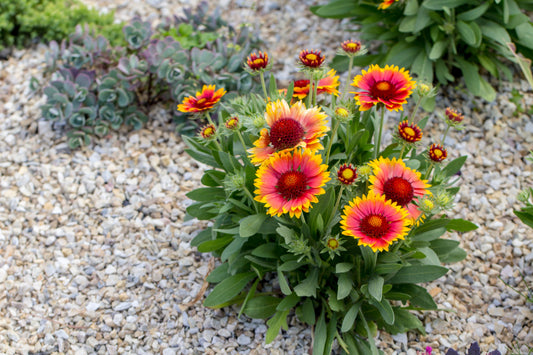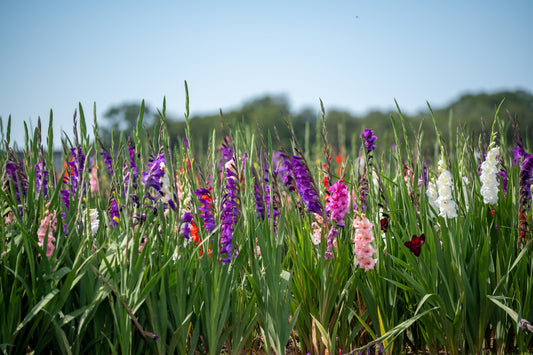Crocus Planting & Growing Guide
Planting Guide Information
-
3"Planting Depth
-
3" ApartPlanting Proximity
-
Fall to WinterPlanting Season
-
Early spring bloomers (except for Saffron).Plant Benefits
-
Moderate; Low in dormancyWater Quantity
-
Late Winter - Early SpringBloom Season
-
Full SunSunlight Quantity
-
Zones 3-8Hardiness Zones
Additional Growing Information
Where to Plant
Whether you're planting in containers or garden beds, Crocuses perform best in locations where the soil drains well, and they will receive full to half-day sun. They will not thrive in waterlogged soil, so if you notice water puddles 5–6 hours after a hard rain, scout out another site or amend the soil with organic material.
When to Plant
Plant your Crocus bulbs before the ground freezes in the fall. The roots will begin to form shortly after planting, and in warm regions, some foliage may also develop in the fall. You can expect buds and flowers to be produced in the early spring.
How to Plant
- For container planting, find a large container with adequate drainage holes and fill it with good quality, well-draining soil. Almost any commercially available potting mix will do the trick. Dig holes and plant the bulbs 3" deep and 2–3" apart, depending on the variety, with the pointed end facing up. Site your Crocuses where they will receive full to half-day sun.
- For outdoor landscape planting, select a spot with well-drained soil where your Crocuses will receive full to half-day sun. Dig holes and plant the bulbs 3" deep and 2–3" apart, depending on the variety, with the pointed end facing up.
- Water thoroughly to soak the soil and settle it around the bulbs.
How to Grow
- Water as needed during active growth periods without waterlogging the soil. About 1" of water per week is a reasonable estimate.
- Add fertilizer in early autumn if your region experiences short, warm springs or in late winter in areas with long and temperate springs.
- Apply a layer of mulch to garden beds before winter and remove in late February so the blooms can poke through.
- Leave the foliage in place at the end of the blooming season rather than trim it off. The leaves will gather sunlight to create food through photosynthesis, strengthening the bulbs for the future.
- Remove the foliage when the leaves turn yellow and die back as the plant slips into dormancy.
Crocus Tips & Tricks
- Overwinter your container-planted Crocuses in an unheated garage to help mitigate the effects of both very cold nights and major temperature swings. Bring them back outside in February or March and watch for sprouts to appear.
- Amend soil with organic material to raise the level 2–3" and improve drainage. Compost, fine-ground bark, or composted manure all work a charm and are widely available.
- Plant bulbs on their sides if you're having trouble discerning which side should face up. Don't worry—the roots will direct the bulbs into the correct position.
From the Family
-
 40% Off
40% OffCrocus - Chrysanthus Mix
60 Mixed Crocus BulbsRegular price $20.97Sale price $20.97 Regular priceUnit price per$34.9540% Off -
 40% Off
40% OffCrocus - Prins Claus
20 Crocus BulbsRegular price $8.97Sale price $8.97 Regular priceUnit price per$14.9540% Off -
 40% Off
40% OffCrocus - Ruby Giant (Fragrant)
20 Crocus BulbsRegular price $8.97Sale price $8.97 Regular priceUnit price per$14.9540% Off -
 40% Off
40% OffCrocus - Goldilocks
20 Crocus BulbsRegular price $8.97Sale price $8.97 Regular priceUnit price per$14.9540% Off -
 40% Off
40% OffCrocus - Flower Record
20 Crocus BulbsRegular price $8.97Sale price $8.97 Regular priceUnit price per$14.9540% Off








